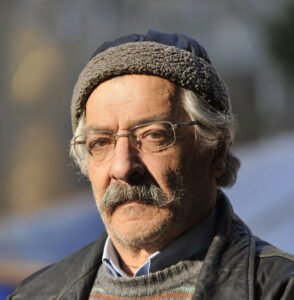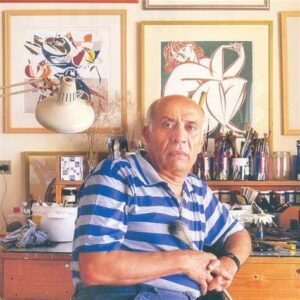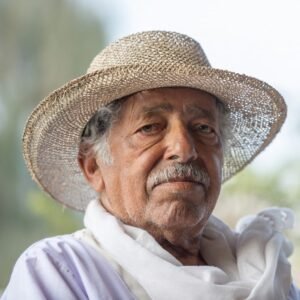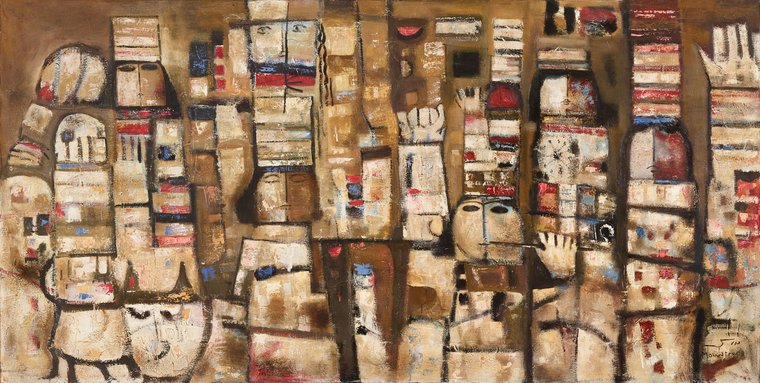
Born in 1922, in a rural village near Aleppo, Syria, into a family of modest means .
From childhood, he showed a keen eye for drawing—sketching local landscapes and farm animals—laying the seeds for his later artistic journey. By his teenage years, he had mastered realist technique and, upon graduating from Aleppo American College in 1940, he began exploring the deeper currents of Surrealism in his sketches .
🎨 Education Abroad: Rome & Paris (1954–1972)
In 1954, Moudarres embarked on intensive artistic training at the Accademia di Belle Arti di Roma, completing his studies there by 1960 . Under the influence of teachers like Franco Gentilini, he began to combine Western Surrealism with regional motifs from Assyrian, Sumerian, and Christian iconography .
In the early 1970s, he continued his education at the École Supérieure des Beaux‑Arts in Paris, sharpening his compositional and technical skills . These formative decades in Europe allowed Moudarres to forge a signature style: bold, flat-headed figures; luminous, warm earth tones; and a harmonious balance between abstraction and cultural narratives .
🖼️ Return to Syria & Artistic Maturation (1961–1993)
Upon his return to Damascus after 1960, Moudarres began teaching at the University of Damascus, eventually becoming Dean of the Faculty of Fine Arts until 1993. He further refined his craft under the mentorship of Wahbi al‑Hariri, who introduced him to fellow painters like Louay Kayali .
During these years, Moudarres produced iconic series including “Icons of Moudarres” (1962), which feature gold leaf and Syrian iconographic symbolism reminiscent of Byzantine and Assyrian art.
🌐 International Recognition
Fateh al‑Moudarres represented Syria at major biennials: Venice Biennale (1961), São Paulo Biennale (1963, where he won a Medal of Honorable Mention), Seoul (1980), Cairo (1986), and New York International Art Fair (1964) . He also exhibited extensively across Beirut, Paris, Vienna, and Washington D.C.—highlighting his key works in retrospective shows such as the Institut du Monde Arabe in Paris (1995).
🧭 Style, Symbolism & Technique
- Surrealist foundations: driven by subconscious imagery and spontaneous drawing .
- Cultural motifs: merging ancient Syrian, Christian, and rural themes into streamlined, almost hieroglyphic forms .
- Mastery of color and texture: earth tones, vivid contrasts, dense oil mixed with sand, gold leaf, and gestural strokes.
- Political undercurrents: from the agricultural collapse of the 1960s to the Lebanese Civil War and existential themes post‑1967, his works carried social commentary in symbolic form.
🏛️ Legacy & Collections
Moudarres’s works are part of prestigious collections: British Museum, Mathaf (Doha), Barjeel Art Foundation, Atassi Foundation, Jordan National Gallery, Dalloul Art Foundation, and the private collections of the Al‑Hariri family, Rudolf & Maria Fechter, and Walter Scheel. His art continues to fetch significant attention in auctions and exhibitions, maintaining relevance in retrospectives across the Arab world and Europe.
🌅 Final Years & Enduring Influence (1993–1999)
Moudarres continued to paint, write poetry and short stories, and mentor students until his death in 1999 in Damascus, aged 77. His legacy endures in modern Syrian art: bridging surrealism, deep cultural roots, and the politics of his time. As one curator noted, his work “looks childish, but is crafted over fifty years”—a testament to his mastery of subtle simplicity .
🎯 In Retrospect
Fateh al‑Moudarres remains a pillar of Arab modernism, blending subconscious freedom, cultural memory, and social conscience into compelling visual narratives. His deceptively simple motifs—flat heads, solemn figures, ancient symbols—carry universal weight and speak to a rooted yet evolving identity. He reinvented Syrian visual language, mentoring generations and leaving behind a body of work that is at once national treasure and global dialogue.
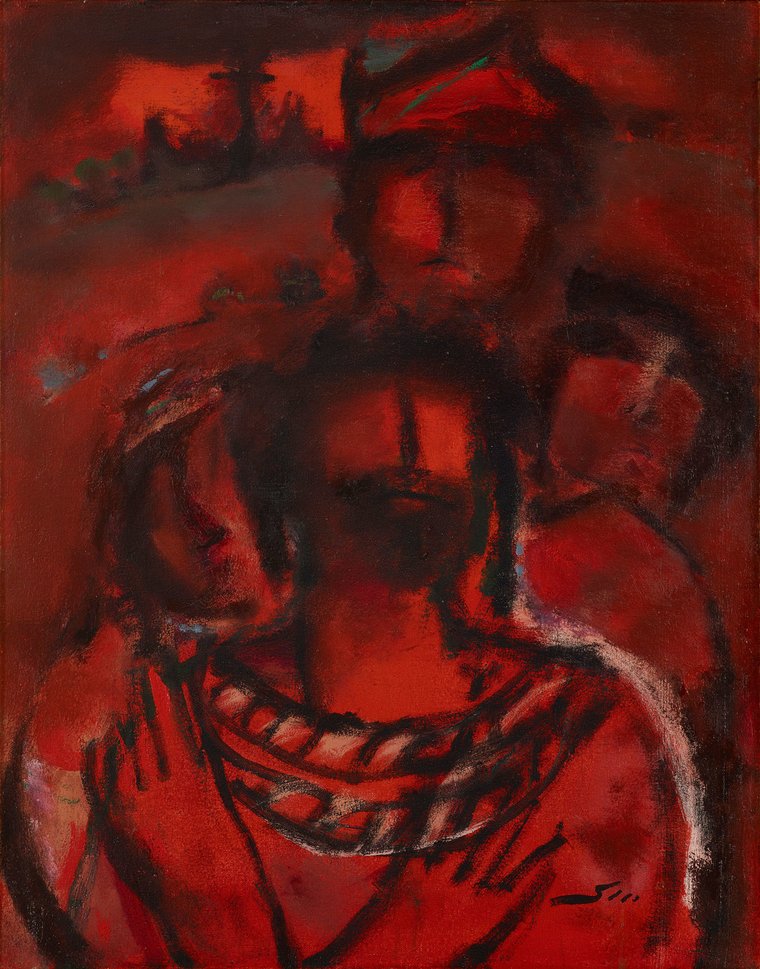

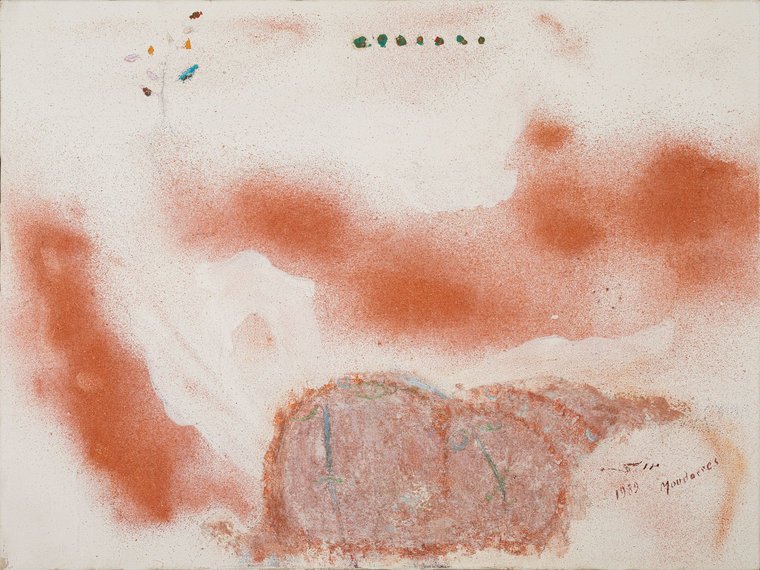
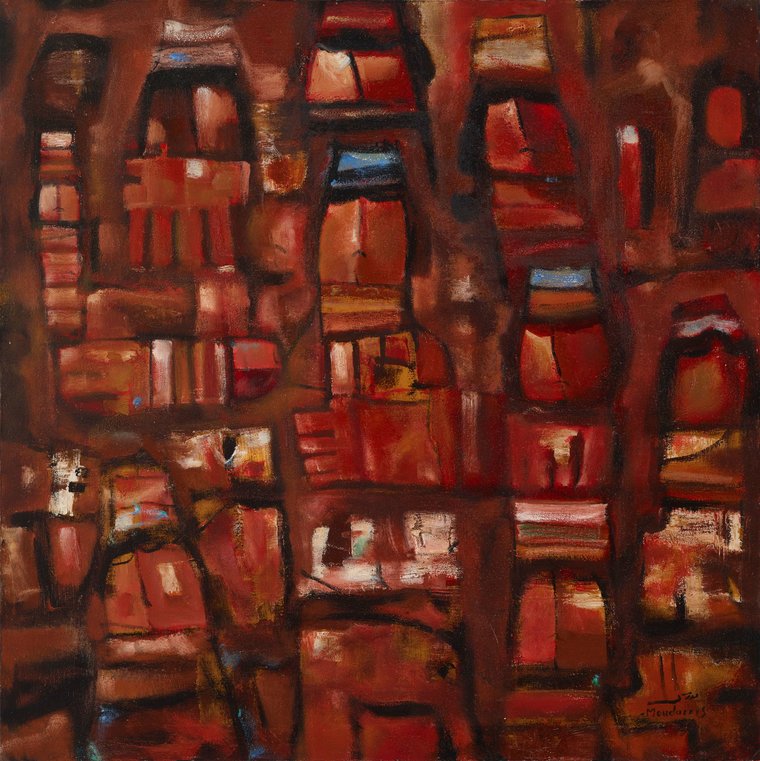

📚 Sources
- Dalloul Art Foundation – biography rem.routledge.com
- Gallery Naila – overview gallerynaila.com+1en.wikipedia.org+1
- Routledge Encyclopedia of Modernism – scholarly reference rem.routledge.com+1v1.sharjahart.org+1
- Wikipedia – factual summary
- Meem Gallery – biography meemartgallery.com+1en.wikipedia.org+1
- Christie’s – “Icons of Moudarres” analysis christies.com
- Sultan Gallery/Rak Art/Foundation – style & collections gallerynaila.com+3sultangallery.com+3rakartfoundation.com+3


